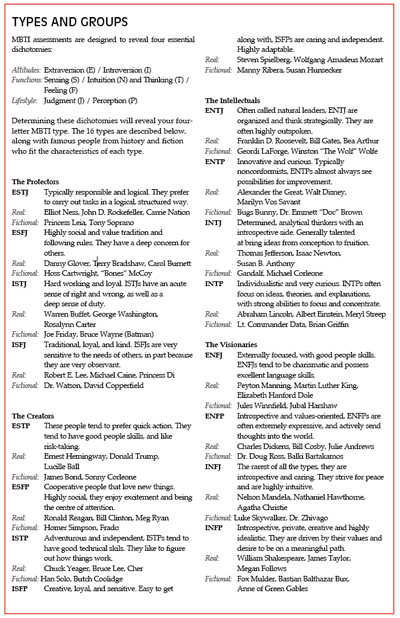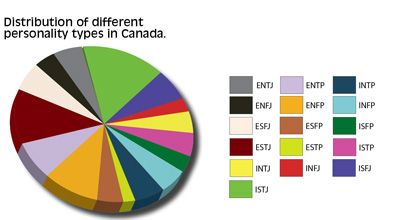
Typecasting
By Mike Davey
Features Business IntelligenceThe Myers-Briggs Type Indicator (MBTI) assessment is a questionnaire designed to measure preferences in how people perceive the world and make decisions.
The Myers-Briggs Type Indicator (MBTI) assessment is a questionnaire designed to measure preferences in how people perceive the world and make decisions. The preferences themselves were extrapolated from the theories of Carl Gustav Jung.
The original developers were Katharine Cook Briggs and her daughter, Isabel Briggs Myers. They began developing it during the Second World War. The idea was that knowing their own personality preferences would help women who were entering the workforce for the first time identify the sort of jobs at which they would be most effective.
That original questionnaire grew into the assessment tool in use today. The MBTI is one of the best-known personality assessment tools, and is certainly one of the most widely used. According to some estimates, as many as two million assessments are administered annually.
Suzanne Price is the program coordinator of Pre-Media/Media & Communications Fundamentals at Seneca College, and will lead a workshop on MBTI at the Canadian Rental Mart in March of 2010. She is a certified MBTI consultant through Psychometrics Canada. Price is a firm believer in the idea that someone can use the MBTI to help achieve his or her goals.
“For me, the MBTI was a complete turning point in my life,” says Price. “After a lifelong journey of entrepreneurial development, it was the one step I really needed. Since taking the assessment, I’ve experienced exponential growth in my life.”
It’s important to remember that the tool sorts for type, not ability. It’s designed only to tell you which things you prefer. It doesn’t tell you how strong your preference is, and it doesn’t indicate which things you’re good at. In other words, it can show you prefer thinking, but not that you strongly prefer thinking, or that you’re good at thinking.
“The goal of the assessment really depends on how an individual or an organization wants to use it,” says Price. “As a college professor, I use it to help students find the path they really want to follow. In that case, the MBTI can be used as a springboard. Sometimes organizations will use the MBTI as a way to help filter applicants. I don’t look at it that way. I do not like to use it as a pigeonholing tool.”
One of the fundamental bases for the MBTI is the idea that people prefer one thing over the other, rather than a bit of both. The preferences indicated are polar opposites. You can think of these as being sort of like up and down, or backwards and forwards. You can go in either direction, but not both.
It’s also important to remember that no personality type is inherently better than any other. Nor does it limit your performance in a particular job. It may help to indicate which careers and management styles you prefer, but not your expected level of success in a field.
“One of the most intriguing things about these assessments is what it can teach us about how others communicate,” says Price. “Growing up, I often had disagreements with my sister and my parents. As it turns out, I tend to the opposite side from them regarding those fundamental dichotomies. Simply learning where other people are coming from is extremely helpful in your daily life.”
We can all use more help when it comes to communicating, and learning the communication styles of others will almost certainly lead you to greater success in both your personal and professional life.
Another basis of the MBTI is that individuals are considered to be the best judge of their own type. However, this only holds true if you answer the questions with complete honesty. Remember that there are no “right” answers on an MBTI questionnaire. The best thing to do is to simply answer with your true feelings.
 |
 |
Print this page